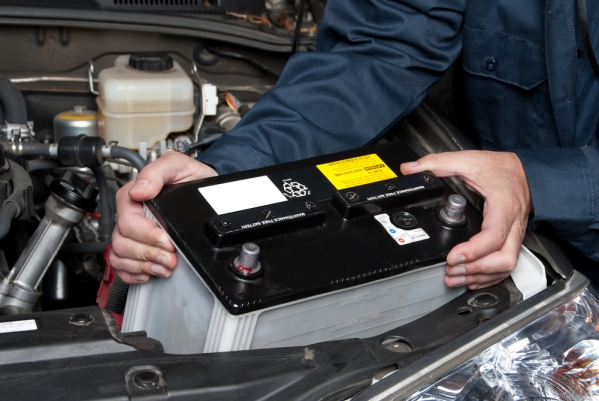Perhaps, few motorists have passed the “bowl of this” – the battery that failed at the most inopportune moment and you need to change your car’s battery. This situation is particularly unpleasant in winter, when the battery is most exposed to critical temperatures and, having exhausted the reserve, is discharged completely.
What to do in such a situation? There is only one answer: go to the nearest auto store and buy a new battery. After purchasing a battery, you will need to install it.
There are two options – tow the car to the nearest service station or replace the battery with your own hands. With the first option, everything is clear, but not everyone knows how to replace a car battery on their own. Today we will talk about this, simple in general, operation.
Tips to Choose a Car’s Battery to Buy:
To begin with, you will have to purchase a battery that would fit the size and, most importantly, performance.
You can buy exactly the same battery as was installed with you, or you can buy another manufacturer. It happens that in the store it is difficult to choose a complete analog of your battery, and therefore you will have to choose from what is available.
We will not name specific battery manufacturers – the leaders of this market can be found in any search engine. By the way, there you can also choose a battery that meets all your parameters, as well as find out whether such a product is available in the store where you are going to go for a purchase.
Battery Location:
To change a car’s battery you will need to locate it first, for this you can open the hood of the car, and find the battery there. Usually, it is located in the right or left corner, on a special shelf. Didn’t find it? There are two options here: either you just can’t see it and it’s worth looking for better, or it really isn’t here.
The second option is possible if you own a car of a non-standard layout – for the sake of saving space, the battery can be hidden in the trunk or somewhere under the seat. Again, look in the instruction manual, and the question of the location of the battery will be resolved.
Tools You Will Need:
Let’s put it, the process of purchasing a car’s battery was successful, and you brought it to the car to change it. Now let’s install a new battery, removing the old one beforehand.
To do this, you will need wrenches of different calibers, a screwdriver, and rubberized gloves. Before disconnecting and removing a failed device, let’s ask ourselves whether there is equipment such as a radio, a navigator, an onboard computer in the car configuration.
If at least one of the listed devices is available, we advise you to borrow another battery on which you can power the listed equipment of the car. This should be done in order to avoid resetting all existing settings and subsequent and reprogramming and eliminating errors that may occur when “rebooting” the battery. We plug in the second battery before pulling out the old battery. After the backup power supply is received, you can dismantle the consumed battery.
We do this in several ways:
So the question remains, How to change a car’s battery. Here are some steps to go through.
1. Disconnecting the terminals. A 10 wrench is usually suitable for this procedure, although some models may have different threads. Therefore, it is important to have a key with interchangeable heads at hand. In fact, there is no particular difference in whether we disconnect the “plus” or “minus” terminal first, but automotive electricians recommend starting with the “plus” terminal, since the electric current runs from the “positive” to the “negative” terminal.
2. Dismantling the old battery. Different car models have different batteries installed differently. It happens that to dismantle the battery, it is enough to remove the terminals, push the halves of the casing, which protects the battery from external influences, and, pulling the handle, remove the device from the slots. In many modern cars, the battery is screwed to the bottom of the casing (to ensure its stability), then you will have to sweat, unscrewing the nut that “holds” the battery.
To do this, you may need a wrench with a head for 13 and with an extension cord, with which you will need to unscrew the mounting nut. After this operation is complete, we push the halves of the casing apart and pull out the battery. Remember that the battery weighs a lot (from 13 to 20 kg), so you may need outside help.
3. Install a new battery. Before installing a new battery, it is necessary to clean the terminals that could oxidize during long-term operation (as a rule, new batteries function for 4-7 years). Cleaning of the terminals is carried out with an old toothbrush soaked in a solution of baking soda.
After that, carefully install the new battery in the grooves, screw it, check how firmly it has stood in the groove with a slight sway from side to side. Then we put on the terminals. If you removed first the “plus” and then the “minus” terminal, then we first attach the “negative” terminal to the new battery, and then the “positive” terminal.
So that the “plus” terminal does not sparkle when in contact with the battery, we put on it a special plastic cap, which can be purchased along with a new battery. So that the terminal fasteners do not corrode, you can spray them with lithium grease (Lithol-24). If your car is equipped with an alarm or central locking, it is necessary to open the car doors and remove the key from the ignition before installing a new battery.
4. Check Its Operation:
After installing the battery, check its operation. To do this, insert the key into the ignition, start the car and check the correct operation of all the electronics onboard. By the way, you can find out how long, even approximately, the new battery will last – for this, it is enough to look at the “minus” of the battery, where the manufacturer stamps two numbers, the first of which means a week (you can recalculate in a month), and the second – the year of production.


Thank you for another informative website. Where else may just I get that type of info written in such a perfect means? I have a undertaking that I am just now operating on, and I have been on the glance out for such info.
Зарегистрируйтесь прямо сейчас и получите 100 фриспинов без депозита, чтобы испытать свою удачу в увлекательных играх и повысить свои шансы на крупный выигрыш. рейтинг казино онлайн xjhxvxpbdw …
A person essentially help to make seriously posts I would state. This is the first time I frequented your website page and thus far? I surprised with the research you made to make this particular publish extraordinary. Fantastic job!
I like this weblog so much, saved to fav.
I was suggested this blog by my cousin. I’m not sure whether this post is written by him as nobody else know such detailed about my problem. You are incredible! Thanks!
When I originally commented I clicked the -Notify me when new comments are added- checkbox and now each time a comment is added I get four emails with the same comment. Is there any way you can remove me from that service? Thanks!
I think other web-site proprietors should take this website as an model, very clean and wonderful user genial style and design, as well as the content. You are an expert in this topic!
Just desire to say your article is as surprising. The clarity in your post is simply nice and i could assume you are an expert on this subject. Fine with your permission allow me to grab your feed to keep updated with forthcoming post. Thanks a million and please continue the rewarding work.